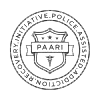
By LYLE R. FRIED, CAP, ICADC, CHC In Addiction Recovery, Addiction Withdrawal, First Steps
Posted April 6, 2015
Can I withdraw from alcohol at home?
What are the symptoms of alcohol withdrawal?
How long does alcohol withdrawal last?
If you’re asking yourself any of these questions, it’s important to know that alcohol withdrawal at home can be risky —even fatal. We don’t recommend withdrawing at home alone, but we’ve put together an alcohol withdrawal timeline to help you understand what symptoms a heavy drinker can expect when they suddenly stop (or significantly reduce) their alcohol intake.
Why Does Withdrawal Occur?
Chronic use of tolerance-forming drugs, including alcohol, can ultimately lead to physical dependence. Drinking excessively over a long period of time alters the nervous system. Eventually, the central nervous system can no longer adapt easily to the absence of alcohol.
When someone is physically dependent on a substance, he or she experiences unpleasant physical and/or emotional symptoms if substance use is abruptly reduced or stopped altogether.
Who Is at Risk for Alcohol Withdrawal Syndrome?
People who drink heavily on a consistent basis are at increased risk for alcohol withdrawal symptoms, also known as alcohol withdrawal syndrome (AWS).
Often, people who are at risk for AWS tend to binge drink. According to the National Institute on Alcohol Abuse and Alcoholism(NIAAA), binge drinking is defined as four or more drinks for women and five or more drinks for men (within a two-hour period).
A standard alcoholic drink is:
- 12 ounces of beer
- 5 ounces of wine
- 5. ounces of distilled spirits (including vodka, gin, whiskey, rum, tequila, etc.)
AWS can be avoided by engaging only in low-risk drinking. For women, this means no more than three drinks in a single day and seven drinks within a week. For men, low-risk drinking is considered no more than four drinks in a day and no more than fourteen drinks in a week. Only about 2 percent of low-risk drinkers form a dependency on alcohol.
Certain individuals may be more at risk for AWS. In addition to excessive drinking, risk factors include:
- Mental health problems such as anxiety or depression
- Especially high stress levels
- A family history of alcohol abuse
- Starting to drink at an early age (while the brain is still developing)
By understanding the risks and limiting alcohol consumption early on, it’s possible to avoid AWS. Taking prolonged breaks from alcohol can also reduce the risk of AWS.
Alcohol Withdrawal Symptoms / Alcohol Withdrawal Syndrome (AWS)

Alcohol withdrawal symptoms can range from mild anxiety to severe hallucinations and seizures. People who drink heavily on a daily basis are at a high risk for withdrawal symptoms, which can manifest anywhere from five hours to a few days after your last drink.
When withdrawing from alcohol, you may experience a combination of the following symptoms:
- Headache
- Anxiety
- Irritability
- Confusion or lack of clarity
- Tremors / shaking
- Insomnia
- Nausea and/or vomiting
- Sweating
- Nightmares
Typically, tremors signal the first stage of alcohol withdrawal and occur within the first twelve hours. Cravings are also an early sign that your body is beginning the detoxification process.
Once the symptoms of alcohol withdrawal syndrome appear, you may experience periods of hyper-sensitivity. Since your senses are used to being dulled by the effects of excessive and continuous alcohol intake, symptoms like irritability or anxiousness may seem overwhelming.
You may experience periods that seem to volley between a hyper-emotional state and fatigue, all in short periods of time. Alcohol withdrawal symptoms are likely to peak (or worsen) over the first two to four days before beginning to subside.
A noticeable lack of mental clarity may persist for weeks. During this time, it is important to refrain from sugar consumption, if possible. Cravings for sugar during withdrawal are normal, but this is because sugar causes the same types of insulin spikes as alcohol. Consuming sugar during detox can actually put you at a higher risk for relapse.
Severe Withdrawal Symptoms – Delirium Tremens
Some people withdrawing from alcohol experience an additional wave of more severe symptoms, typically within 12-24 hours after their last drink. These individuals generally have a prolonged history of drinking and tend to consume excessive amounts of alcohol. In some cases, they have experienced alcohol withdrawal symptoms before.
This more severe stage of withdrawal is marked by high blood pressure and hallucinations, which are experienced by about 25 percent of those withdrawing from alcohol.
Second stage symptoms may also include seizures. These seizures have indicators (warning signs) including muscle rigidity, loss of bowel or bladder control, difficulty breathing, jaw or teeth clenching, and uncontrollable biting of the tongue or cheek.
The most severe level of alcohol withdrawal is known as delirium tremens (the DTs). Symptoms include:
- Fever
- Rapid heart rate
- Extreme disorientation or confusion
- Extreme irritability
- Seizures
- Auditory hallucinations (hearing sounds that don’t exist)
- Tactile hallucinations (itching, burning, and numbness of the skin)
- Visual hallucinations (seeing non-existent images)
If you experience any of these symptoms, it is a medical emergency. Call for help or visit your nearest emergency room. As mentioned above, severe withdrawal symptoms can be fatal.
So How Long Does Alcohol Withdrawal Last?
There’s no one-size-fits-all answer to this question. The severity and duration of alcohol withdrawal depends on a number of factors, including the severity and duration of your addiction to alcohol.
Symptoms typically begin within eight hours of the last drink, although they may start earlier. For mild to moderate drinkers, these effects tend to peak after 72 hours and subside between days five and seven.
For those with more severe alcohol dependence, withdrawal lasts longer. DTs generally start three days after the start of the detoxification process and last 2-3 days. However, in especially severe cases, DTs can extend beyond eight days.
Home Remedies for Alcohol Detox
Although we don’t recommend going through withdrawal from home, the following suggestions can make at-home detox a safer and more bearable process.
Amino acids can be extremely helpful during early recovery and detox. Neurotransmitters are the chemicals your body produces to allow nerve cells to pass “all is well” messages from cell to cell. Amino acids are the precursors of these neurotransmitters and are almost always depleted during active addiction.
Without amino acids, symptoms of withdrawal and alcohol cravings can seem unbearable. Replacing these lost amino acids helps support the body and restore the brain, promoting feelings of wellbeing.
You should also drink plenty of fluids, including water, juice, broth, or electrolyte boosters like Gatorade, and take vitamins. If you’re able to eat, consume a balanced diet including fruit, vegetables, whole grains, and lean sources of protein. Cold showers feel refreshing and can help ease some of your physical symptoms. They’re also a good way to “reset” when you’re experiencing cravings.
It also helps to occupy your mind by reading, meditating, or listening to music. If you can engage in some light exercise, like yoga or walking, do so. Additionally, ensure that you’ve informed someone of your plans. It’s best if you have a trusted friend or family member (or two) that can check on you and lend support throughout the withdrawal process.
If your symptoms become more severe, this friend or family member would be tasked with getting you the appropriate care.
What Type of Amino Acids Should I Buy?
In double-blind research, alcoholics responded favorably to DLPA (D, L-phenylalanine) combined with L-glutamine, L-tyrosine, and L-tryptophan.
DLPA is a mood booster that is generally used for depression, anxiety, and pain. L-glutamine helps increase energy and brain health. L-tyrosine is used to produce dopamine and noradrenaline and is considered anti-stress, while L-tryptophan promotes a relaxed state of mind and is sometimes used to treat insomnia.
Look for these on the label of the amino acids bottle, which can be found at many health food stores.
Sleep During Alcohol Withdrawal

Consistent and quality sleep is vital to addiction recovery and is especially important during alcohol detox. The liver does most of its repair work during the night, the digestive system prepares the body to eliminate toxins during sleep, and proper brain function does not occur without sufficient sleep. Sleep deprivation is connected to anxiety, irritability and depression, which can exacerbate withdrawal symptoms and put you on the path to relapse.
If you are having trouble sleeping, melatonin is an over-the-counter supplement that can help. You can also follow basic sleep tips including:
- Stick to a sleep schedule.
- Avoid naps.
- Stay away from bright lights just before bed, including TV, computer, or phone screens.
- Exercise daily (although you may only be capable of light exercise during withdrawal).
- Avoid caffeine, cigarettes, and heavy meals in the evening.
- An hour before you want to sleep, try winding down with a calm activity like reading.
- Strengthen the association between your bed and sleep by using your bed only for sleeping.
Ensuring that you get quality sleep each night can greatly ease your withdrawal symptoms and help you on the path to recovery.
What if I Need More than Just Detox?
You may be asking yourself, ‘What should I do after alcohol detox?’ Many individuals cannot successfully transition into a substance free lifestyle without outside assistance. Addiction recovery is a difficult and ongoing process that doesn’t end with detox.
Treatment for alcohol addiction may include:
- Counseling
- Support group/12-step meetings (like Alcoholics Anonymous)
- Outpatient treatment
- Inpatient treatment
- An aftercare plan that includes living a healthy lifestyle
Each type of treatment offers its own benefits, and it’s helpful to explore which treatment option is the best fit for you personally. In most cases, a combination of the methods listed above is most effective.
Here at The Shores Treatment and Recovery, we take a holistic (mind, body and spirit) approach to addiction healing, treating the whole person as well as the family.
If you or someone you love is caught in the deadly cycle of addiction, give us a call today. You deserve to live a full and addiction-free life.











